Category ArchiveMary Blair
Books &Disney &Illustration &Layout & Design &Mary Blair 12 Jul 2010 07:03 am
Mary Blair – 1
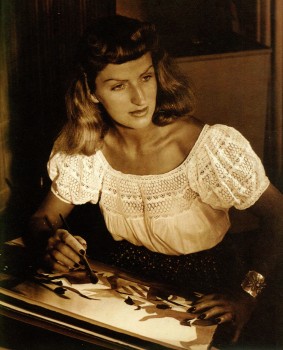
(Click any image to enlarge.)
- I received a magnificent gift, recently, from John Canemaker. It’s a book that was published in Japan that intensely focusses on the work of Mary Blair, the brilliant artist who
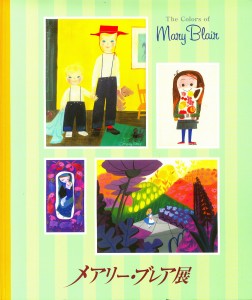 designed and stylized many Disney’s golden films.
designed and stylized many Disney’s golden films.
The book is chock-a-block with images, and even though most of the writing is in Japanese, the book is a glorious item to read through – just for the pictures. Fortunately, there is identification in English under all of the images. John Canemaker also has a wonderfully written Foreward in the book.
I’m going to make a couple of posts selecting some images that I found exciting and relevant to Ms. Blair’s career. Included, of course, will be some paintings and designs by her husband, Lee Blair, and her brother-in-law, Preston Blair.
I’m sure a lot of the paintings were chosen to act as a comparison to some of the animated segments done by the trio. Take, for example, “Woman with Red Flowers in Hair” by Preston Blair.
This post will attend to the pre-Disney paintings of all three artists.
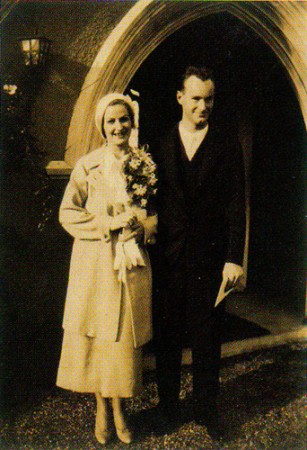
Wedding Photo – March 3, 1934
Mary and Lee Blair
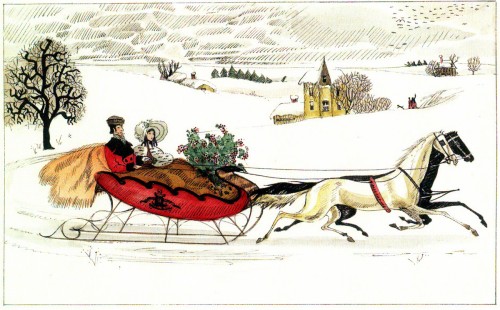
Mary Blair – Couple in Snow Sled
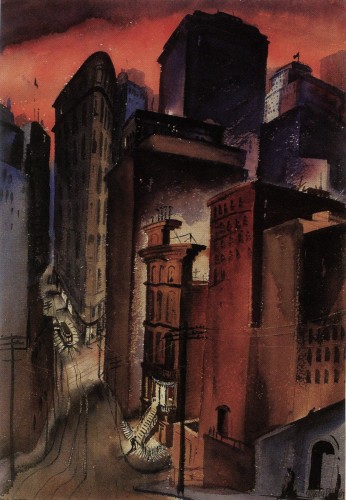
Mary Blair – San Francisco Nights
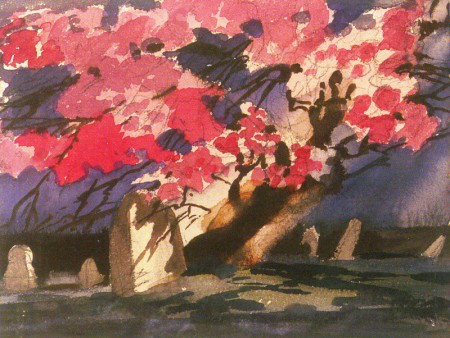
Mary Blair – Landscape of Trees
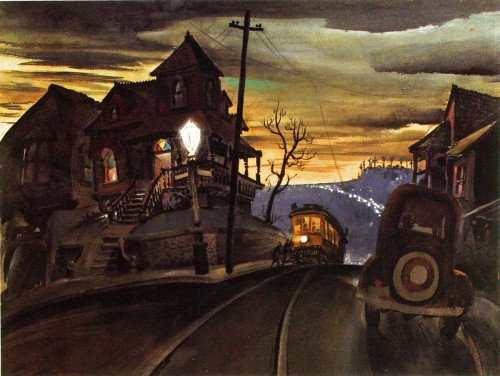
Preston Blair – Night Street Scene with Cable Car
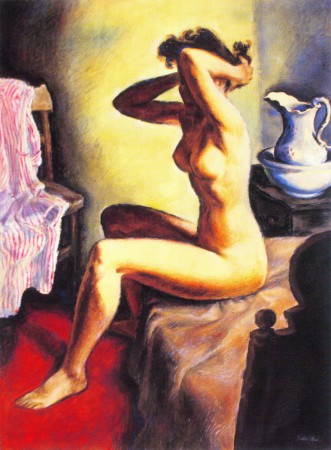
Preston Blair – Female Nude Preening
May I also remind you that John Canemaker has a wonderful book available in the US. The Art and Flair of Mary Blair is still for sale on Amazon.
Articles on Animation &Bill Peckmann &Disney &Illustration &Mary Blair 19 Aug 2009 07:33 am
El Groupo & Mary Blair’s Peter Pan
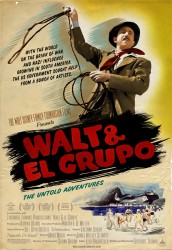 - Yesterday I saw a preview screening of Walt and El Groupo. This is a documentary exploration of the Disney trip to South America to bring back material for Saludos Amigos and Three Caballeros. If you have any interest in Walt Disney or the history of his studio or Mary Blair, you’ll have to see this film. It features interviews with a number of the children of those who went to South America with Disney. Interviews with those who hosted Disney talk about the visit.
- Yesterday I saw a preview screening of Walt and El Groupo. This is a documentary exploration of the Disney trip to South America to bring back material for Saludos Amigos and Three Caballeros. If you have any interest in Walt Disney or the history of his studio or Mary Blair, you’ll have to see this film. It features interviews with a number of the children of those who went to South America with Disney. Interviews with those who hosted Disney talk about the visit.
The film is shot in a beautifully lush color that is almost reminiscent of IB Technicolor. One would expect the home movies to be grainy and unattractive, but instead they’re gorgeous.
The film is worth the visit. It’ll open in NY & LA on Sept. 11th. I’ll write more about it as the event gets closer.
There’s also upcoming a screening for MOCCA, the Museum of Comic and Cartoon Art featuring a Q&A with writer/director Ted Thomas and producer Kuniko Okubo, moderated by John Canemaker. This will take place on Thursday, August 27th, 7:30 PM at the Brooklyn Academy of Music, BAM Cinema 4, (30 Lafayette Avenue, Brooklyn, NY).
Admission is free for Members of MoCCA. To rsvp, call (212) 254-3511.
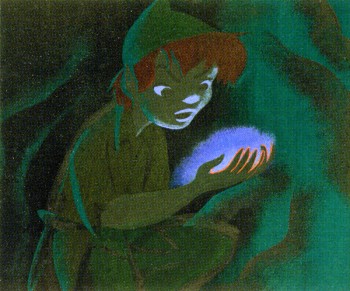 - In tune with the above comments and having posted, this past week, the wonderful 1940 model sheets from Disney’s Peter Pan (thanks to Bill Peckmann and his fine collection), I thought about the Mary Blair art for this film. Neither those model sheets nor Mary Blair’s art made it to the film.
- In tune with the above comments and having posted, this past week, the wonderful 1940 model sheets from Disney’s Peter Pan (thanks to Bill Peckmann and his fine collection), I thought about the Mary Blair art for this film. Neither those model sheets nor Mary Blair’s art made it to the film.
I thought, as a companion piece to those early model sheets, I’d post the Peter Pan illustrations in John Canemaker‘s fine book: The Art and Flair of Mary Blair. A number of these have been used to illustrate the new book, Walt Disney’s Peter Pan. They’re all attractive and modern in style. I think the film took the colors without the style and came up with a picture postcard look.
Here are Mary Blair‘s paintings:
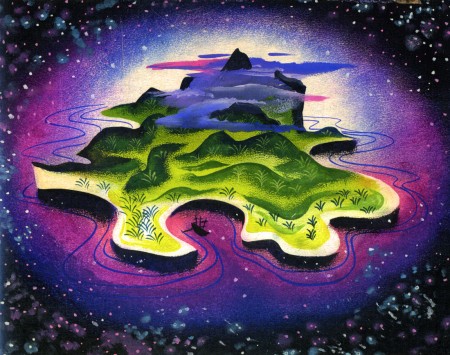
(Click any image to enlarge.)
Books &Disney &Mary Blair 14 Apr 2009 08:16 am
Chouinard the Book
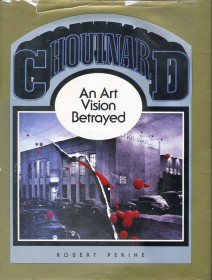 - I recently came upon an excellent book, Chouinard/An Art Vision Betrayed by Robert Perine published in 1986. This book is the history of the school that would become CalArts.
- I recently came upon an excellent book, Chouinard/An Art Vision Betrayed by Robert Perine published in 1986. This book is the history of the school that would become CalArts.
I suspect it’s more familiar to those on the West Coast than we on the other side of the continent. Regardless, the book well documents the connection between this art school and the Disney studio, particularly in the early days.
Here we’re treated to a good history of Don Graham, who led the Disney classes for Walt during the ’30s expansion movement. We also come upon students and teachers including all the famous names: Phil Dike, Virgil Partch, Hardie Gramatky, Retta Scott, Mary and Lee Blair, Ward Kimball and many others. We’re also treated to photos and artwork by these people. We also see a clear picture of the school’s founder, Nelbert Chouinard.
I’ve pulled a couple of photos and art pieces and a couple of paragraphs from the first chapter which I thought worth sharing.
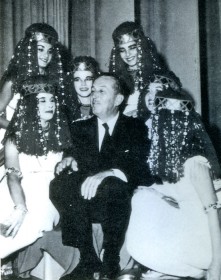 I made a deal with some of the teachers at Choulnard to come out and work with me, to sit with me by the day and know my problems. That, In turn, gave them the chance to know what we had to work on. They sat tight In the room with me; I picked Graham because he was more Life . . . figures and movement and things . . . simplification. So Graham sat with me In what we called our sweatbox. Fifty percent of my time was spent In the sweatbox going over every scene with every animator.
I made a deal with some of the teachers at Choulnard to come out and work with me, to sit with me by the day and know my problems. That, In turn, gave them the chance to know what we had to work on. They sat tight In the room with me; I picked Graham because he was more Life . . . figures and movement and things . . . simplification. So Graham sat with me In what we called our sweatbox. Fifty percent of my time was spent In the sweatbox going over every scene with every animator.
The sweatbox was an un-insulated projection room which Walt describes as “hot as the dickens,” where animators would come to sweat out Walts approval of their latest attempts. ‘They used to dread comin’ in… I’d just tear hell out of’em,” but this was all part of the learning process as both animators and studio head ____________Walt at Egyptian Ball – 1956
worked out the best solutions for making the
moving figure work. So Graham was soon a part of this process and carried Walt’s ideas back to his classroom.
Reciprocally, a bit of Graham (and Nelbert) rubbed off onto Walt as they worked together 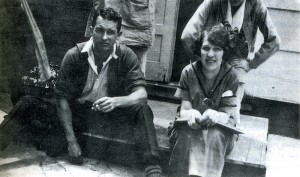 on the problems of animation. Said Walt:
on the problems of animation. Said Walt:
I set up a whole new thing (which Is) having Us effect now among the artists. We think of action. We think of drawing for action. We call It action analysis. You draw from a static figure when you’re In Life class. And your model’s sitting there. You’re draiumg the spinal column … the whole anatomy… _______Don Graham on the porch of the 8th St. School
but you don’t get any feeling of action.
So we have the model go through actions. She goes through It and then.. .sits over In the corner.. .and they sketch what they saw. What you see here (Is) not a literal copy of something. It’s.. .the Illusion you get.
Even before Walt had come to California — when he was only 19 — he had frugally photostated Muybridge’s now-famous movement photographs out of a borrowed library book, then cut them up and overlapped them in an attempt to analyze motion. But now it was a new kind of challenge — doing it with drawing. Walt further describes that challenge:
We’ve got to analyze the walk. So we would then photograph people going through actions… then we would study It. There were a lot of things I was able to get over that way. You’d have a running action. We’d draw. (It’d) be perfect because (we’d) be looking at that drawing Individually on the drawing board. (But) It doesn’t look that way; that’s what gave us stiff animation. Then we got the trick of blurting.. .In effect, elongating. When you’re moving fast Is when the action begins to take on a smoothness.. At wasn’t numbers of drawings. It’s how drawings are made.
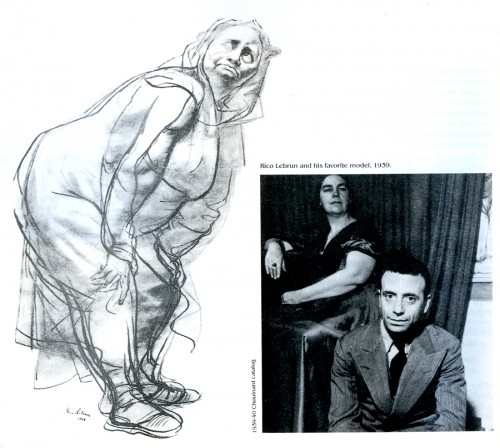
Rico LeBrun (who taught animal anatomy to the animators
at Disney during the making of Bambi) and his favorite model
-
The ideas that developed during Disney’s training period (1930-1940) were greatly aided by Don Graham. Eventually Walt hired him at Disney Studios as head of their own night school. So Nelbert’s influence and ideas were carried out into the professional world. In the animation industry alone Chouinard students and teachers like Graham, Dike, Caldwell, Davis, Gramatky, Fleury, Johnstone, Lebrun, Lee and Mary Blair, T. Hee, Plummer, and many others became important stimuli to the successful growth of the animated film.
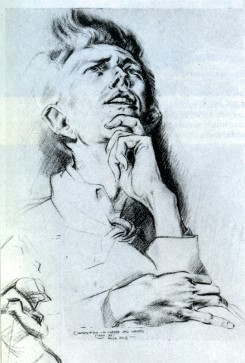
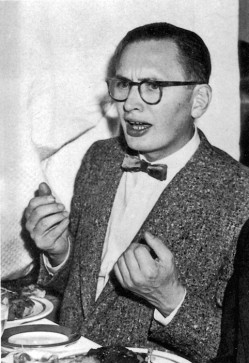
A drawing by Retta Scott | Virgil Partch at a Guild Meeting
The book is a treat. I’ll add more to this in a future post.
Disney &Mary Blair &Story & Storyboards 03 Feb 2009 08:23 am
Babies in Color
- Yesterday I posted a reconstructed board for the sequence eliminated from Fantasia. Baby Ballet was to be set to Chopin’s Berceuse.
Sylvia Moberly-Holland was the principal designer of this piece and Mary Blair worked with her in many of the pastel images on the board. Here are some of those same images in color. I’ve lifted them from the Fantasia “Legacy” dvd and offer them to complete the post. Not all of these color images made it to the board I posted.
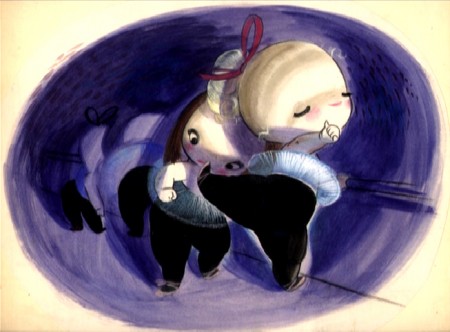
(Click any image to enlarge.)
It turns out that it is a small world after all.
Animation Artifacts &Disney &Mary Blair &Story & Storyboards 02 Feb 2009 08:48 am
Baby Ballet
The Baby Ballet, set to the music of “Berceuse” by Chopin was to be a segment for Fantasia when they were originally putting the feature together. One of those rotating sequneces that were being planned, such as the Clair d’Lune sequence. The Baby Ballet never made it much further than the storyboards and some small design work.
You can see a similar piece, Perambulator, on an earlier post of mine.
The piece was supervised by Sylvia Moberly-Holland with Mary Blair working under her.
What follows is the board constructed of several versions of the piece. I believe Mary Blair did the fully rendered images. The first version is the board as photographed, followed by my breakdown so that I can keep the images large.
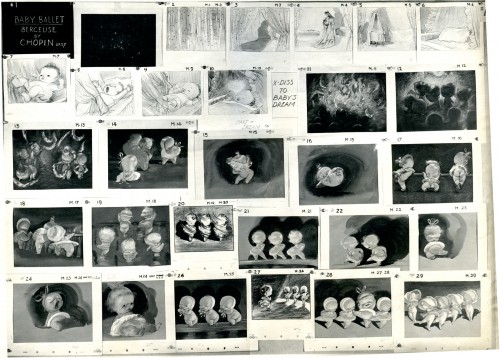
(Click any image to enlarge.)
Tomorrow, I’ll offer some color sketches.
Animation Artifacts &Books &Disney &Mary Blair &Models 24 Jun 2008 08:03 am
Mary Blair Boards
- Let’s imagine.
Mary Blair is the most brilliant of all the color stylists to have worked at the Disney studio during its heyday. Among the photographed storyboards loaned me by John Canemaker was this board of Mary Blair images. The only problem is that it’s B&W. So, we have to imagine the array of greens and blues and yellows the designer would have used for this very colorful sequence.
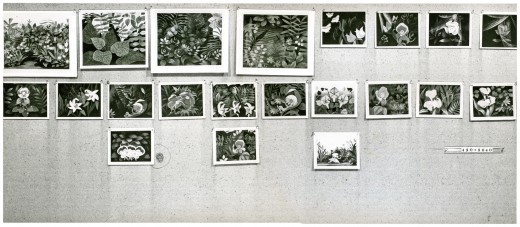
This is the board in it’s entirety. Now, to split it up so you can look at the images a bit more closely.
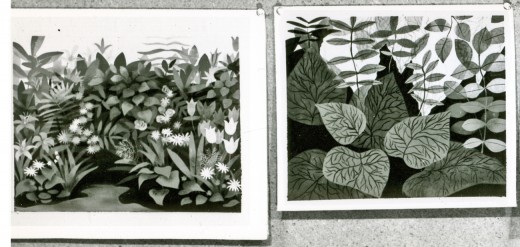 1a
1a
_____To enlarge any of the images, click on them.
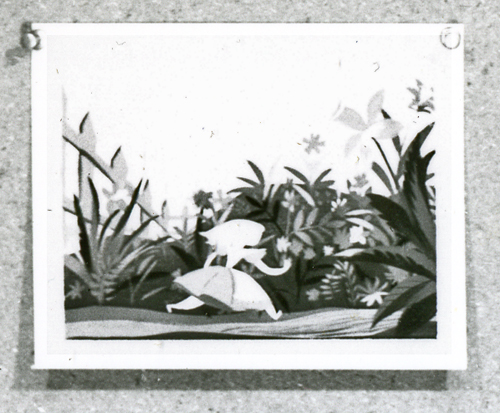 3c
3c
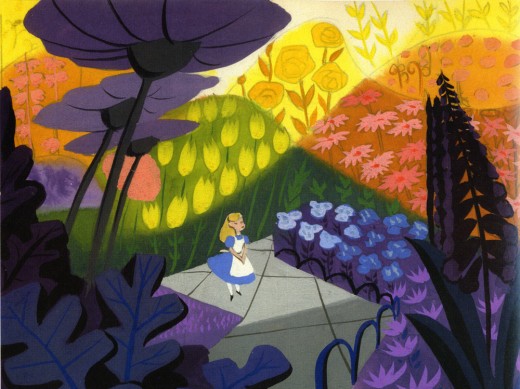
Here’s an image from Canemaker’s book, The Art and Flair of Mary Blair. I just wanted to remind you of how these other images probably look in color.
Animation Artifacts &Disney &Mary Blair &Story & Storyboards 23 Jun 2008 07:59 am
Alice Boards 3
- This is the third photo of the board for Alice In Wonderland. Once again, I think it was drawn by Joe Rinaldi. I have no evidence to prove otherwise, and that guess makes the most sense to me at the moment.
As with past posts, I show the storyboard photo as is, then reproduce it one section at a time so that I can enlarge it to the largest size.
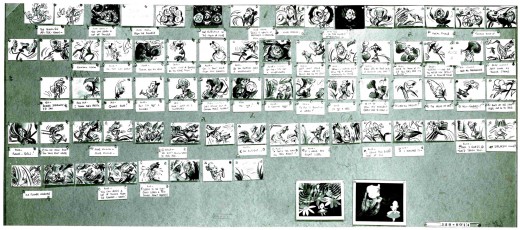
____________(Click any image to enlarge.)
At the base of the storyboard are these two Mary Blair images. I did a bit of a search (and I do mean “a bit”), and I wasn’t able to find color reproductions of these two pictures. So I’m posting them as they appear in this photo. They’re a bit blown out in the photo in hand, so I did a little work in photoshop to pull out a bit more of the grays.
There is another photo which includes a bunch more of Mary Blair’s designs for Alice. I’ll post that soon (though I also have to search to see if any of those are printed in color elsewhere.)
Books &Disney &Mary Blair 11 Jun 2008 08:02 am
The Runaway Lamb 1
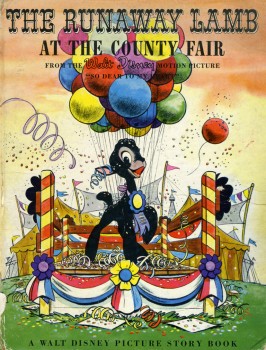 - So Dear To My Heart was Disney’s second try at a live action feature, following Song of the South. Like the earlier film, they employed the same two children, Bobby Driscoll and Luana Patten, and told a story around them and their pet lamb. There was a sweet animated sequence which was directed by Ham Luske. Mary Blair, John Hench and Dicke Kelsey designed it. Animation Department
- So Dear To My Heart was Disney’s second try at a live action feature, following Song of the South. Like the earlier film, they employed the same two children, Bobby Driscoll and Luana Patten, and told a story around them and their pet lamb. There was a sweet animated sequence which was directed by Ham Luske. Mary Blair, John Hench and Dicke Kelsey designed it. Animation Department
Les Clark, Milt Kahl, Hal King, Eric Larson, John Lounsbery, Don Lusk, and Marvin Woodward were credited as animators.
Here’s a book that built on the film’s characters. It’s done in a style somewhat similar to the animated sequence in the film. The book is illustrated by Julius Svendsen, who became an animator at the studio, working in films from Melody (1953) to Robin Hood (1973). He also did a nunber of comic book illustration for Disney in the late 50′s and 60′s, working with Floyd Gottfredson.
The drawings in this book are excellent; strong poses with fine watercolored backgrounds. It’s similar to but totally different from the Little Golden Books that were being done at the same time.
The book comes from John Canemaker‘s collection, so I want to thank him for allowing me to post the pictures. A lot of scanning’s involved, so I have to break it into two posts to give you the full book.
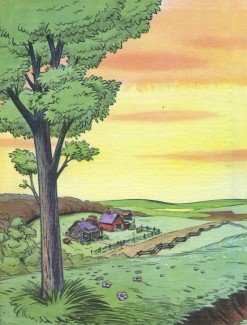
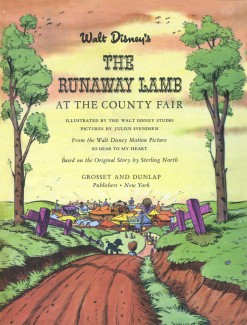
(Click any image to enlarge.)____________
____________Look for the conclusion tomorrow.
Animation Artifacts &Disney &Mary Blair &Peet &Story & Storyboards 03 Mar 2008 09:00 am
Last of Susie
- In the past two weeks I’ve posted a number of boards and preliminary artwork for Susie the Little Blue Coupe, the 1952 Disney short. Bill Peet did all of the storyboard drawings posted last week, and he did a storybook prep for the film posted the week before.
All of this material came to me via a generous loan from John Canemaker.
Here’s the final board in the series. It seems to be LO drawings and doesn’t appear to be part of the storyboard. Perhaps it was prepared for a Leica reel? Regardless, the drawings are interesting, though I doubt Bill Peet did them all.
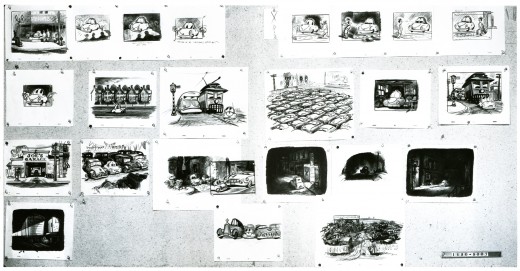
__As with other recent posts of storyboard material, I’ve broken it up and repositioned
__the images so that you can enlarge them for better viewing. The above image rep-
__resents what the photo given me looks like.
 1a
1a
____________ (Click any image to enlarge.)
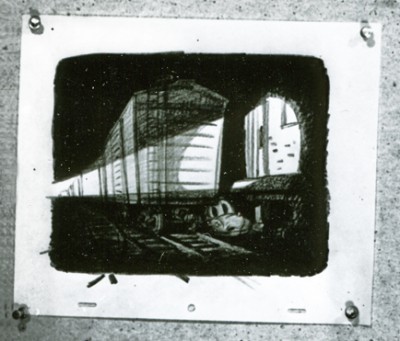 4a
4aFinally, I wanted to give an indication of the film’s color, so I’ve gone back to John Canemaker’s book The Art and Flair of Mary Blair and have poached this color sketch she did in styling the film.
Animation Artifacts &Books &Disney &Mary Blair &Peet &Story & Storyboards 29 Jan 2008 09:08 am
Last Little House – 5
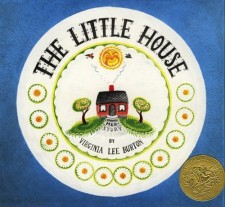 – Following up yesterday’s posting, here’s the last of the phographed storyboards loaned to me by John Canemaker. It was a board done by Bill Peet and Bill Cottrell. Since Cottrell, Disney’s brother-in-law, didn’t draw, he undoubtedly did a script adaptation from the Virginia Lee Burton book.
– Following up yesterday’s posting, here’s the last of the phographed storyboards loaned to me by John Canemaker. It was a board done by Bill Peet and Bill Cottrell. Since Cottrell, Disney’s brother-in-law, didn’t draw, he undoubtedly did a script adaptation from the Virginia Lee Burton book.
Don’t forget to look at John Canemaker ‘s book The Art and Flair of Mary Blair. This book goes well into the design of this film with lots of illustrations.
Here are links to the other 4 parts of this
Little House storyboard fiesta:
______Part 1 ______Part 2 ______Part 3 ______Part 4
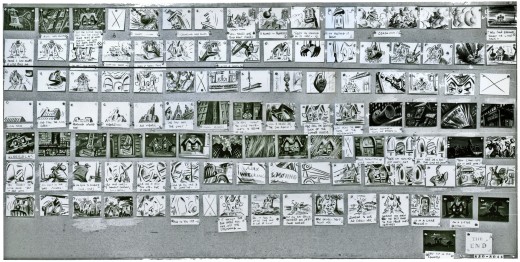
This is the 5th photo of the storyboard as it stands. To allow you to see the images larger, I’ve split the board up into sections.
 1a
1a
___Click any image to enlarge.
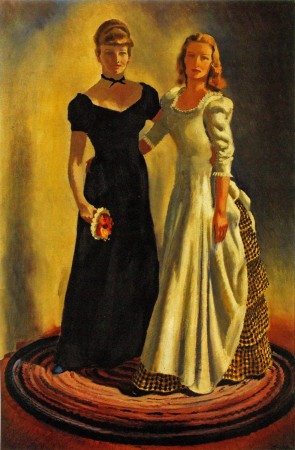
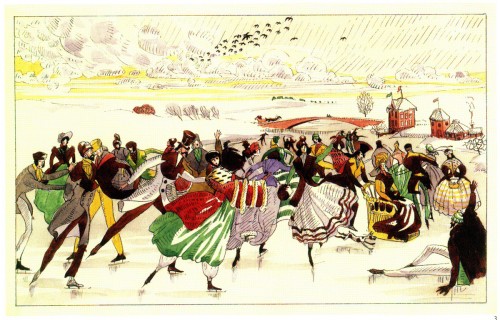
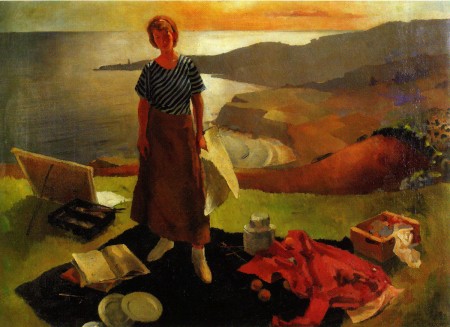
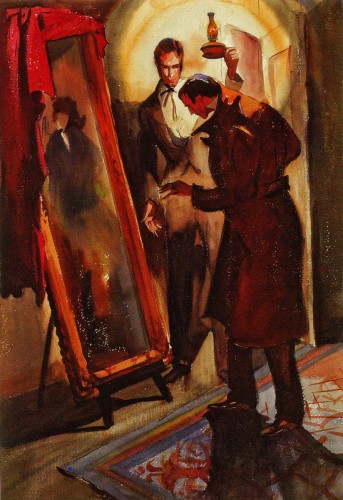
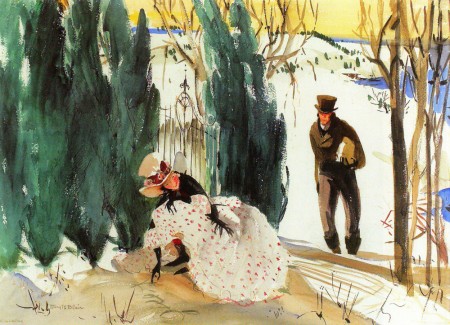
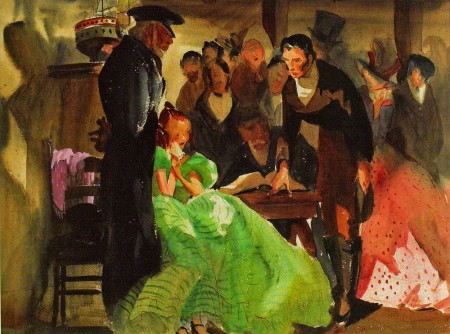
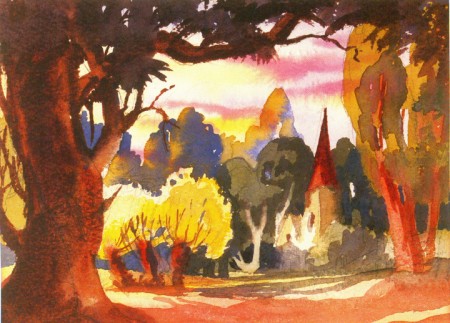
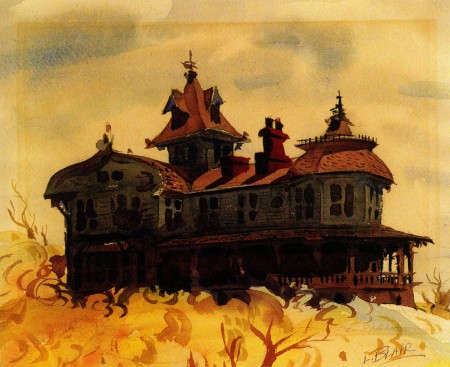
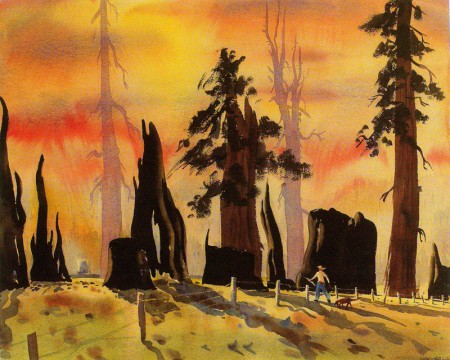
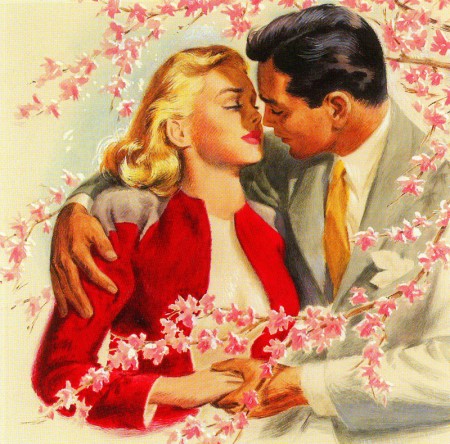
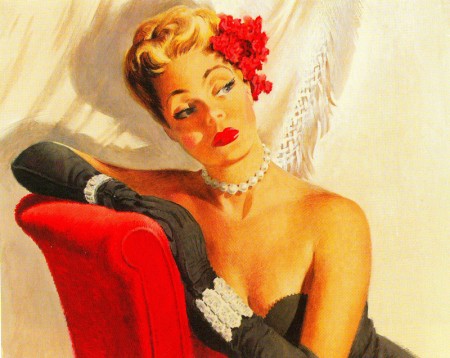

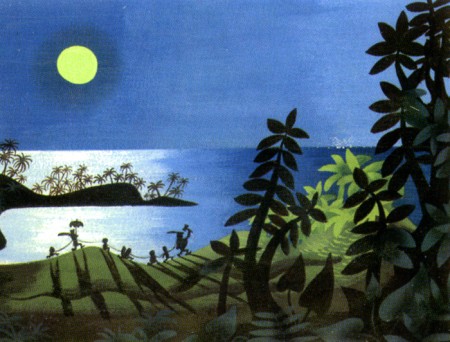
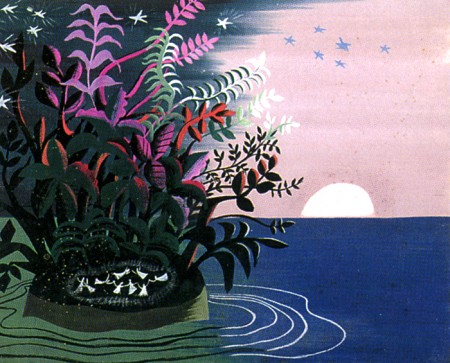
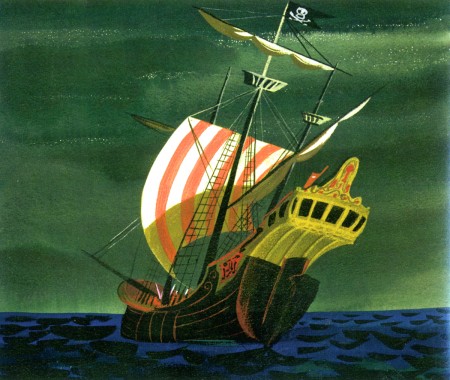

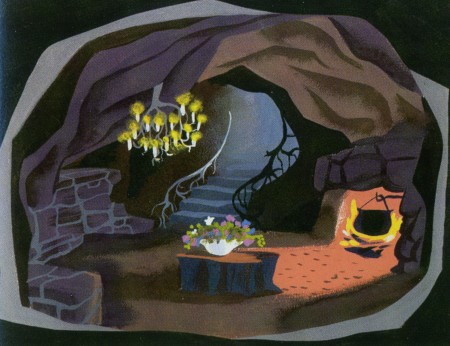
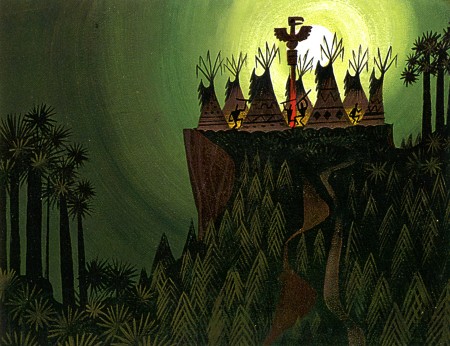
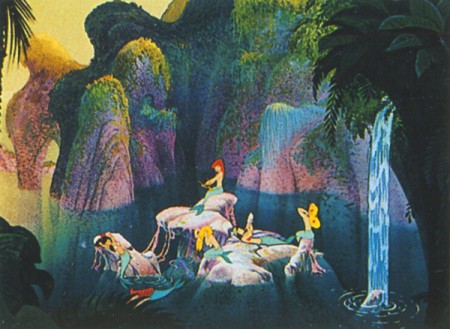
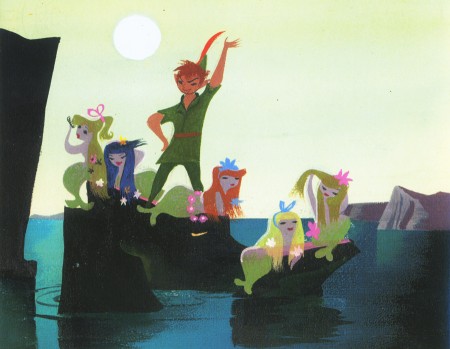
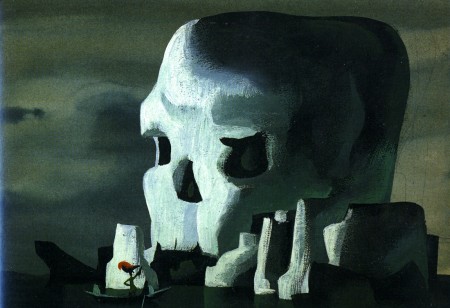
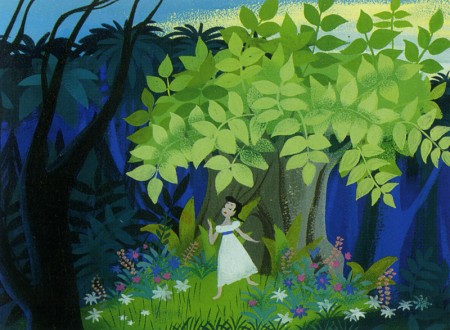
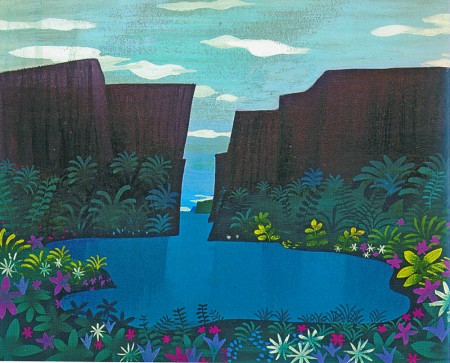
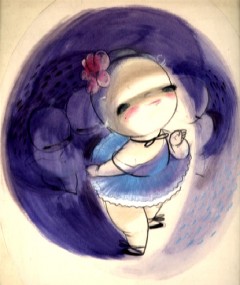
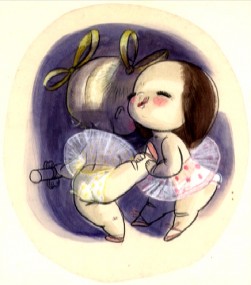
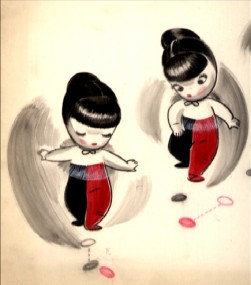
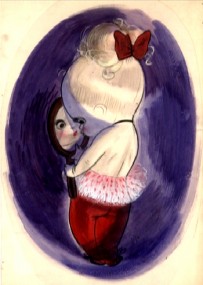
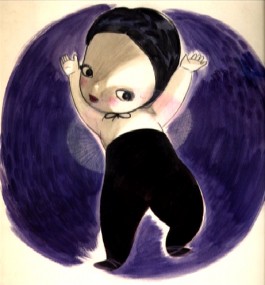
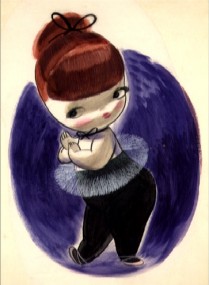
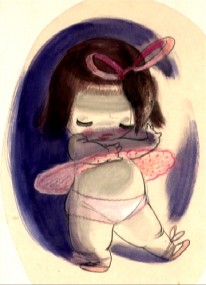
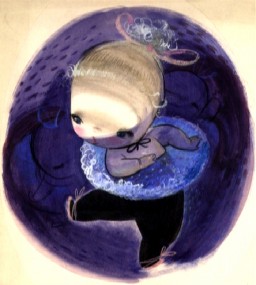
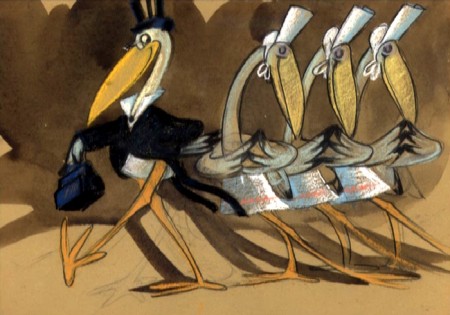
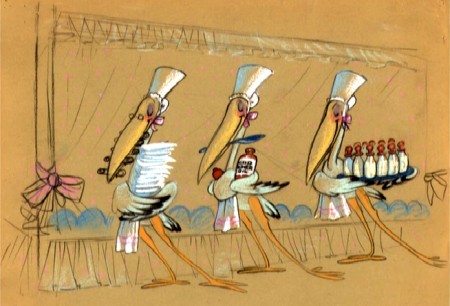
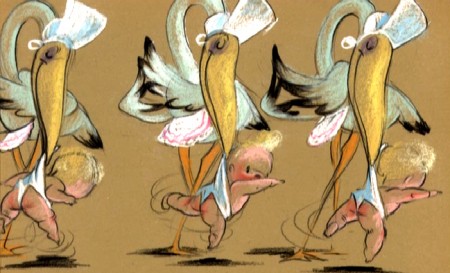
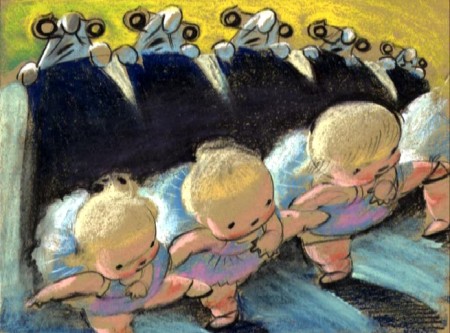
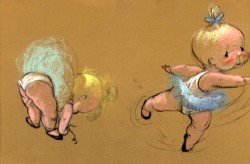
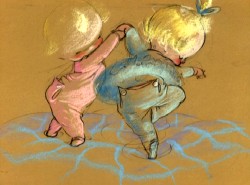
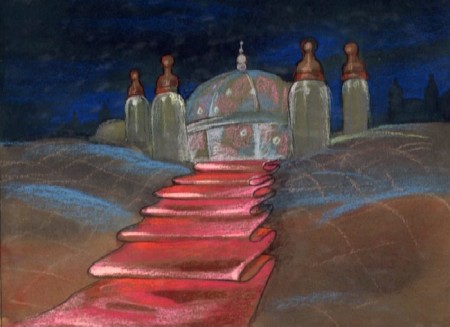
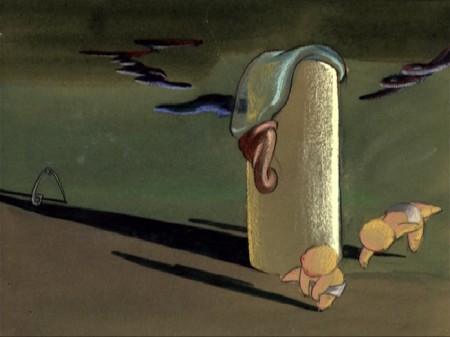
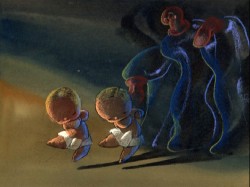
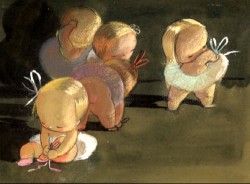
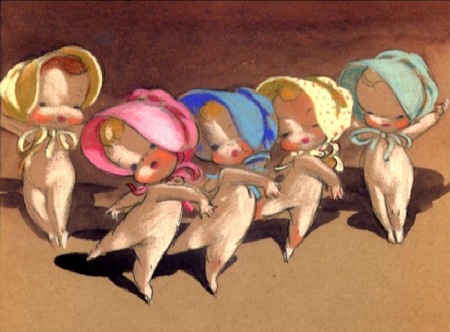
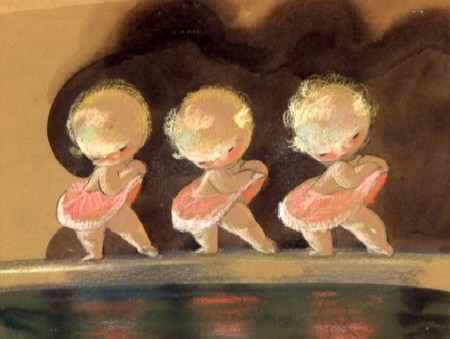
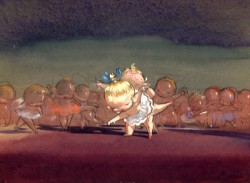
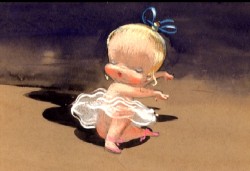
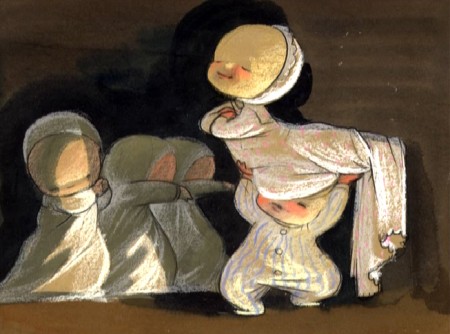
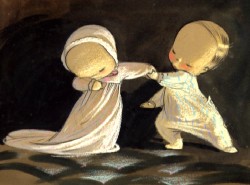
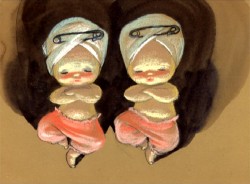
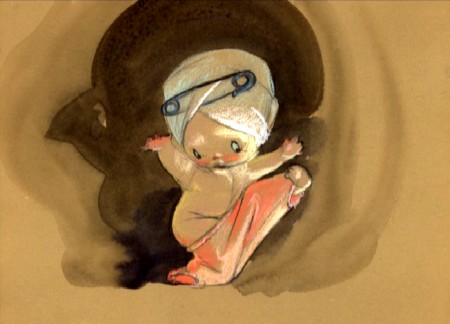
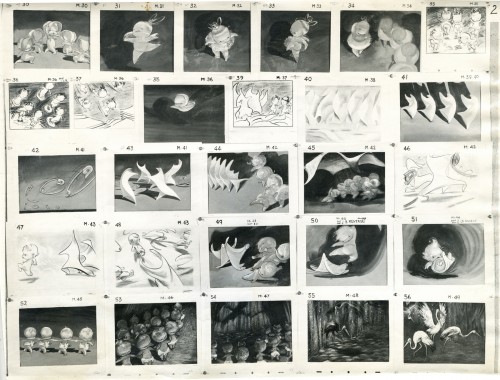
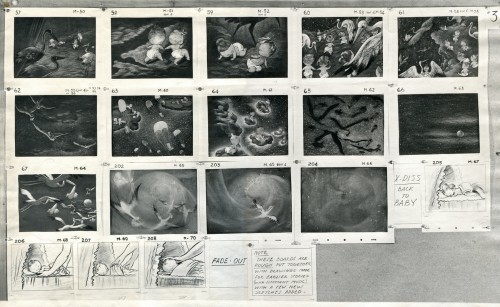
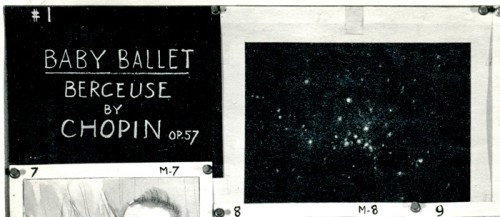
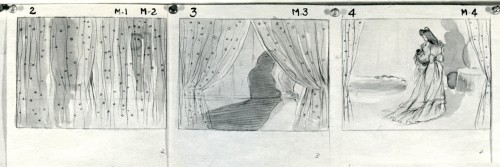
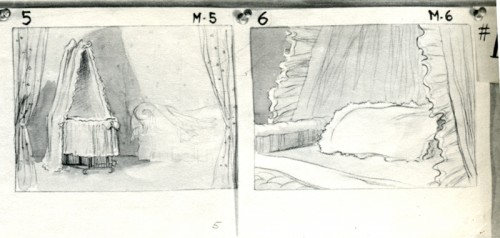
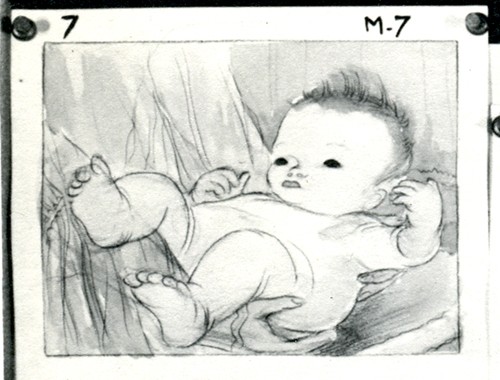


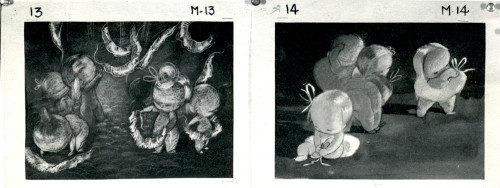

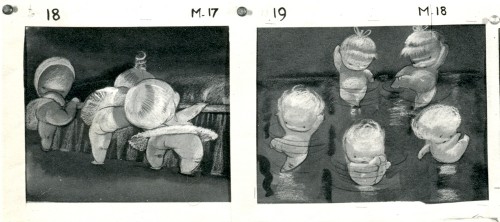

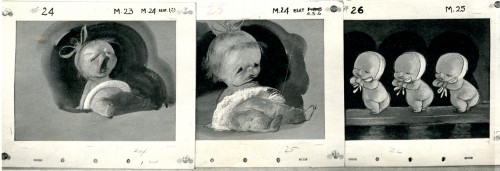
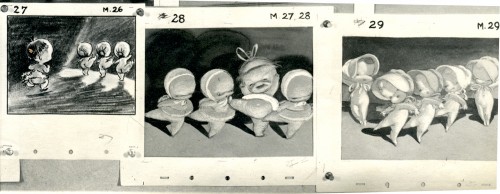





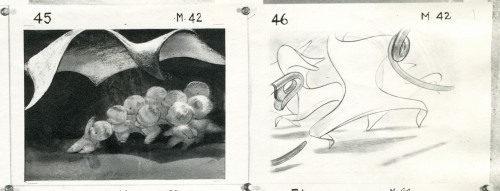
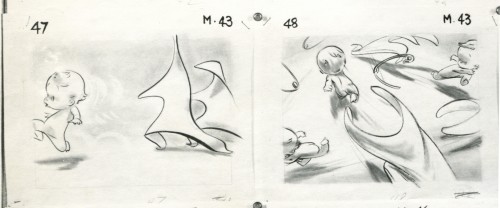


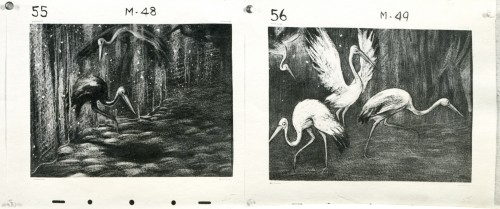

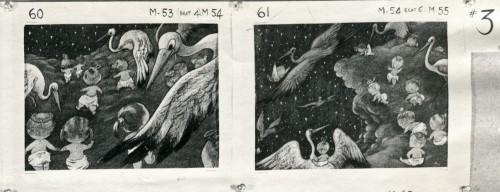

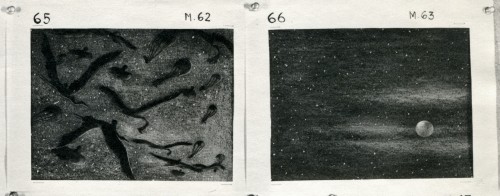
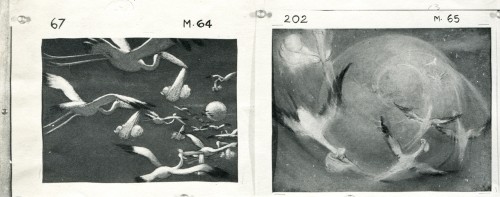

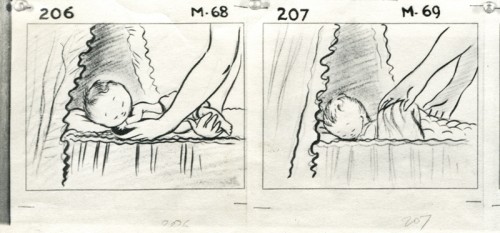
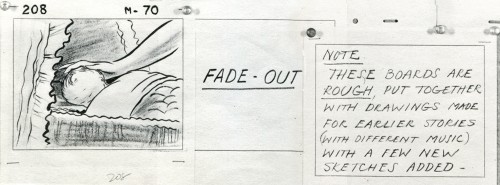
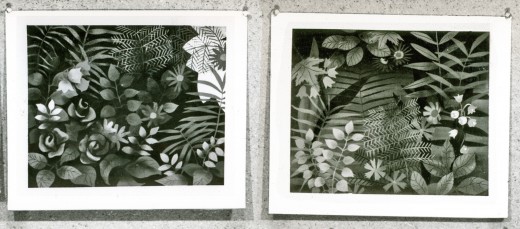 1b
1b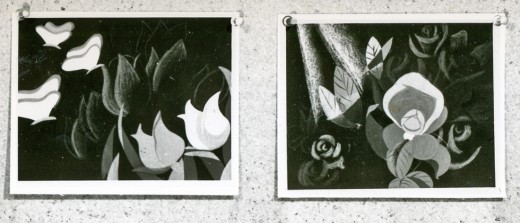 1c
1c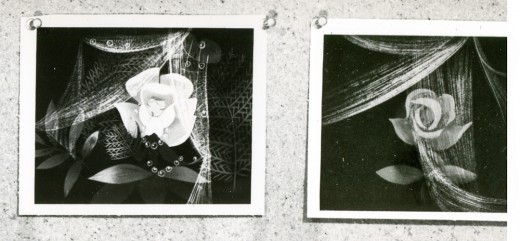 1d
1d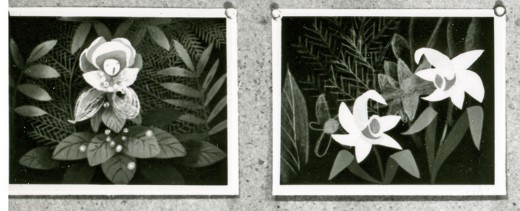 2a
2a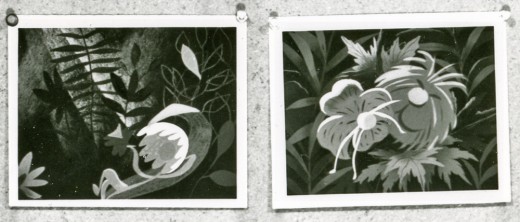 2b
2b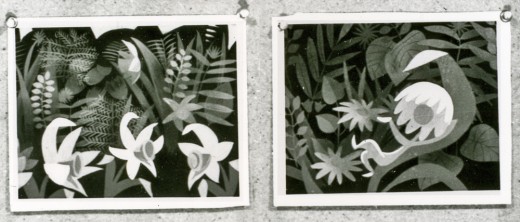 2c
2c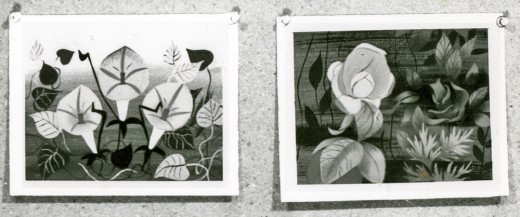 2d
2d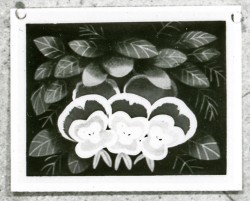 3a
3a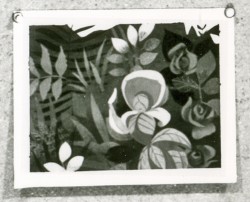 3b
3b 1a
1a 1b
1b 2a
2a 2b
2b 3a
3a 3b
3b 4a
4a 4b
4b 5
5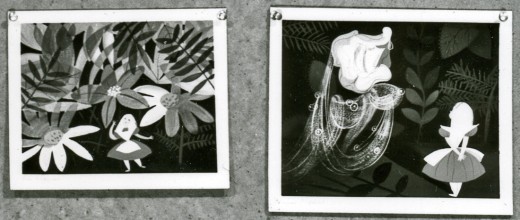
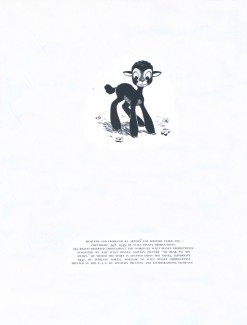
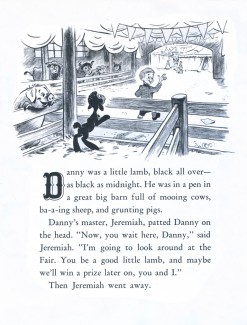 1
1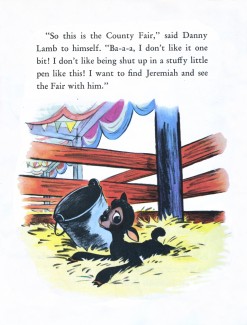 2
2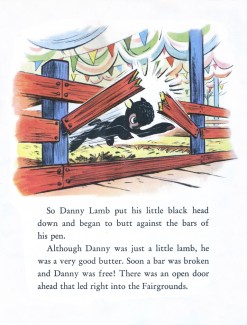 3
3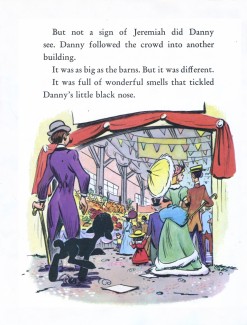 4
4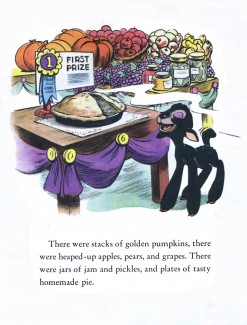 5
5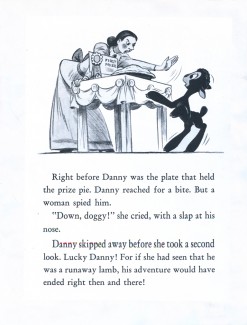 6
6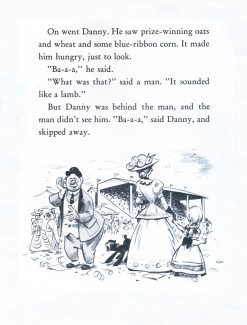 7
7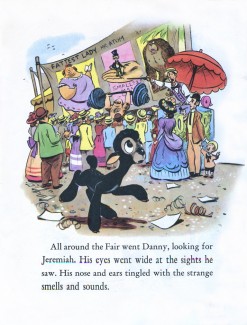 8
8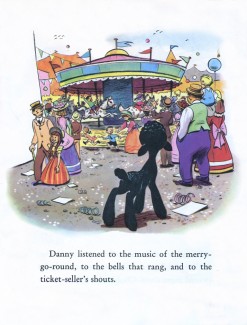 9
9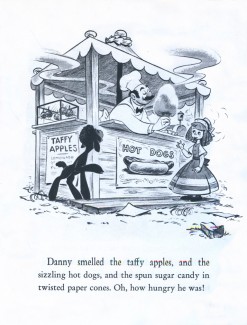 10
10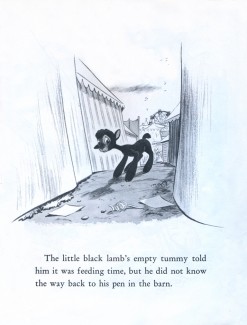 11
11 1b
1b 2a
2a 2b
2b 3a
3a 3b
3b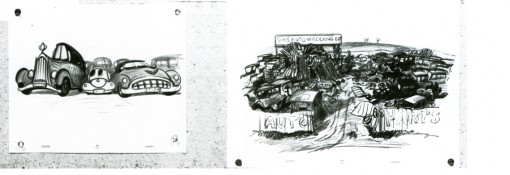 4b
4b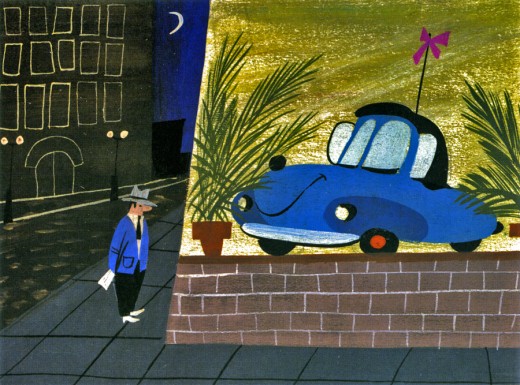
 1b
1b 2a
2a 2b
2b 3a
3a 3b
3b 4a
4a 4b
4b 5a
5a 5b
5b 6a
6a 6b
6b 7a
7a 7b
7b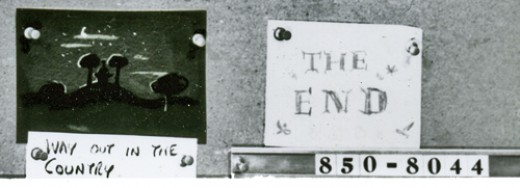 8
8